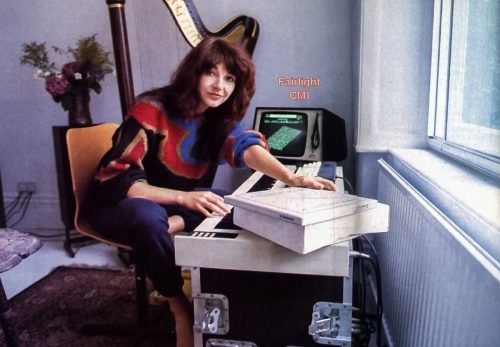The Fairlight CMI, or Computer Musical Instrument, emerged in the late 1970s as one of the most groundbreaking innovations in music technology. Developed by Australian inventors Peter Vogel and Kim Ryrie, the Fairlight CMI was the first digital sampling synthesizer, enabling musicians to record and manipulate real-world sounds in a way that had never been possible before. This pioneering instrument combined the functionalities of a synthesizer, sampler, and sequencer, all integrated into a single, user-friendly system.
The significance of the Fairlight CMI in music history cannot be overstated. It marked the beginning of the digital age in music production, transforming how artists composed, recorded, and performed their music. By allowing users to digitally sample any sound and play it back at different pitches, the Fairlight CMI opened up a new realm of creative possibilities. Its intuitive graphical interface, which utilized a light pen to interact with the screen, set a new standard for music technology, making complex sound design accessible to a broader range of musicians.
Historical Context
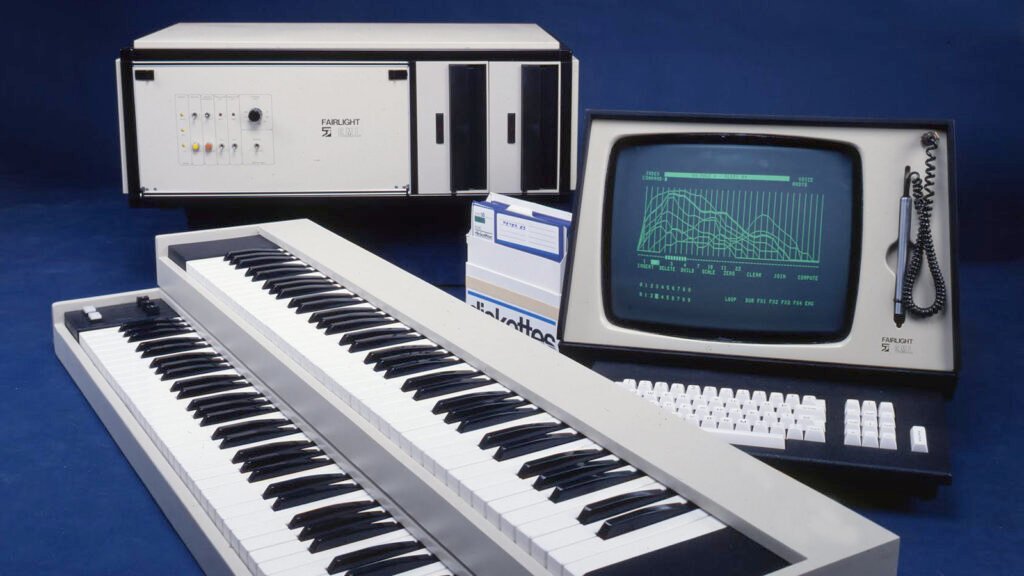
Before the advent of the Fairlight CMI, music technology was primarily analog, relying on traditional instruments and early electronic synthesizers. The late 1960s and early 1970s saw the rise of analog synthesizers like the Moog and ARP, which utilized voltage-controlled oscillators, filters, and amplifiers to create and manipulate sound. These instruments, while revolutionary in their own right, were limited by their inability to accurately reproduce real-world sounds and their cumbersome patching systems.
The state of music technology before the Fairlight CMI was characterized by these limitations. Analog synthesizers required a deep understanding of complex signal pathways and were prone to tuning instability. The recording process involved multitrack tape machines, which, though effective, lacked the precision and flexibility of digital systems. Musicians and producers had to be inventive with the available technology, often using tape splicing and overdubbing techniques to achieve the desired effects.
Early developments in digital technology hinted at the possibilities that the Fairlight CMI would later realize. In the 1960s, computer music research at institutions like Bell Labs and Stanford University explored digital sound synthesis and processing. The invention of the digital-to-analog converter (DAC) and the subsequent development of computer music languages, such as Max Mathews’ MUSIC, laid the groundwork for digital sound manipulation. These early experiments demonstrated the potential for computers to generate and transform audio in ways that analog equipment could not.
The influence of these pioneering efforts culminated in the creation of the Fairlight CMI. By integrating digital sampling and sequencing into a cohesive, user-friendly instrument, Peter Vogel and Kim Ryrie capitalized on the advances in microprocessor technology and digital memory storage. Their work was inspired by the burgeoning field of digital audio research and the desire to overcome the constraints of analog synthesizers.
Development and Invention
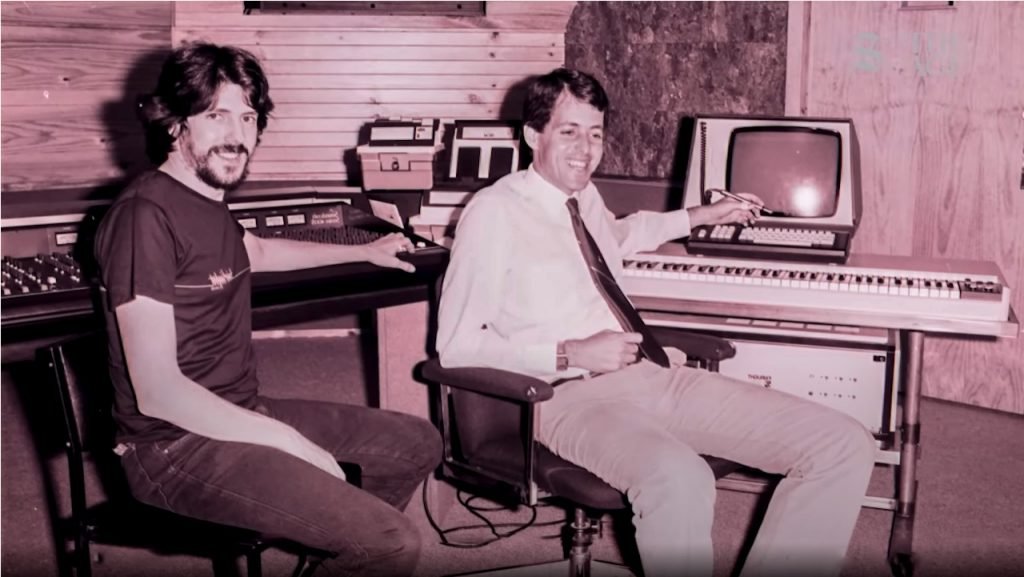
Founders: Peter Vogel and Kim Ryrie
The Fairlight CMI was the brainchild of two Australian visionaries, Peter Vogel and Kim Ryrie. In the mid-1970s, Ryrie, a budding electronics enthusiast, and Vogel, a talented computer programmer, joined forces with the ambition to create a revolutionary music instrument. Their collaboration was fueled by a shared passion for pushing the boundaries of music technology and a desire to explore the possibilities of digital sound synthesis.
Key Milestones in the Development of the Fairlight CMI
The development of the Fairlight CMI was a journey marked by several key milestones:
1975: Conceptualization
Vogel and Ryrie began their collaboration with the goal of developing a digital synthesizer. Their initial efforts focused on creating an analog synthesizer but quickly shifted towards digital technology as they recognized its potential for greater versatility and precision.
1979: Fairlight Instruments Pty Ltd Founded
With initial funding secured and a growing team of engineers and developers, Vogel and Ryrie founded Fairlight Instruments Pty Ltd. This marked the formal beginning of their quest to build the world’s first digital sampling synthesizer.
1980: Introduction of the Fairlight CMI Series I
The first version of the Fairlight CMI, the Series I, was introduced. It featured a light pen for graphical interaction, an 8-bit digital sampling system, and a built-in sequencer. This model laid the foundation for what would become a groundbreaking tool in music production.
1982: Release of the Fairlight CMI Series II
The Series II model introduced significant improvements, including 16-bit sampling and an expanded memory capacity. It quickly gained popularity among musicians and producers for its enhanced sound quality and increased functionality.
1985: Launch of the Fairlight CMI Series III
The Series III further refined the instrument, offering higher sampling rates, improved user interface, and greater processing power. This version solidified the Fairlight CMI’s reputation as a cutting-edge instrument in the music industry.
Technical Specifications and Innovations
The Fairlight CMI was renowned for its pioneering technical specifications and innovations:
Digital Sampling:
The Fairlight CMI was the first commercial instrument to use digital sampling, allowing users to record and manipulate real-world sounds. This innovation enabled musicians to create entirely new sonic textures by capturing and altering any audio source.
Light Pen Interface:
One of the most distinctive features of the Fairlight CMI was its light pen interface. Users could interact with the graphical display directly, making sound design and sequencing more intuitive and visual.
Page R Sequencer:
The built-in sequencer, known as Page R, allowed users to arrange and edit samples in a grid-based format. This innovation made complex sequencing tasks more accessible and streamlined.
Sound Manipulation Capabilities:
The Fairlight CMI offered extensive sound manipulation tools, including time-stretching, pitch-shifting, and looping. These capabilities provided unprecedented control over sampled sounds, enabling new creative possibilities.
Polyphonic and Multitimbral Functionality:
The Fairlight CMI supported polyphony, allowing multiple notes to be played simultaneously, and multitimbrality, enabling different sounds to be played on different channels. This made it a versatile tool for composing and performing complex arrangements.
Advanced Memory and Processing Power:
The Fairlight CMI Series III featured significant upgrades in memory and processing power, with up to 14 MB of RAM and a 16-bit microprocessor. This allowed for higher fidelity sampling and more intricate sound designs.
Key Features and Innovations
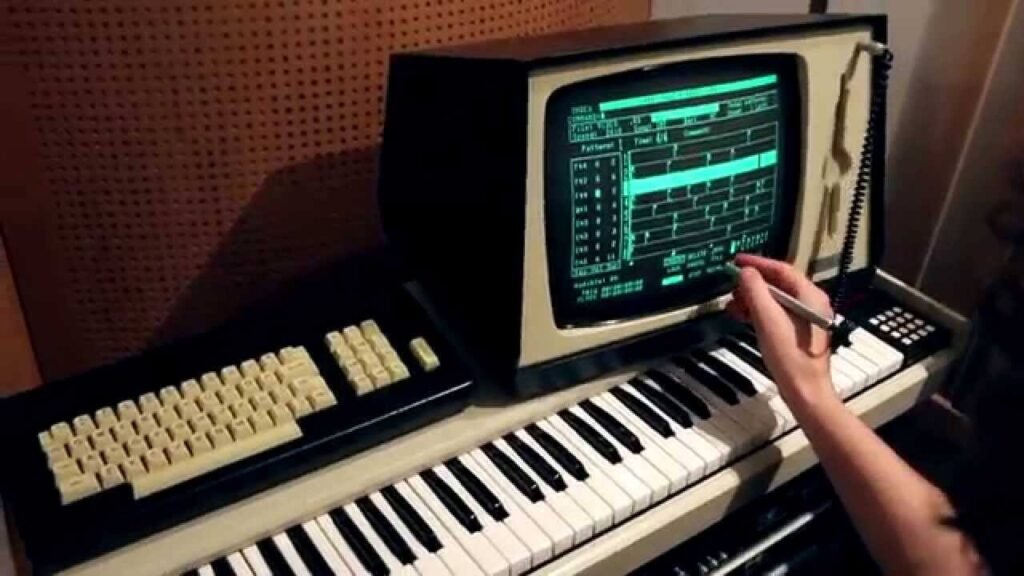
Digital Sampling and Its Impact
One of the most revolutionary aspects of the Fairlight CMI was its digital sampling capability. Prior to its invention, synthesizers primarily generated sounds through analog oscillators, limiting the range of sounds that could be produced. The Fairlight CMI changed this paradigm by allowing users to digitally record any sound and then manipulate it within the instrument. This capability opened up a vast new world of sonic possibilities, enabling musicians to incorporate real-world sounds into their compositions with unprecedented precision and flexibility.
Digital sampling had a profound impact on music production. It democratized sound design, allowing artists to create unique audio signatures by sampling everyday noises, traditional instruments, or even other recordings. This innovation not only broadened the creative palette of musicians but also laid the foundation for entire genres, such as hip-hop and electronic music, which heavily relied on sampling techniques.
User Interface and Design
The Fairlight CMI was notable for its pioneering user interface, which was designed to be both intuitive and powerful. The instrument featured a built-in monitor and a light pen, a pointing device that allowed users to interact directly with the screen. This graphical interface was a significant departure from the hardware-centric controls of analog synthesizers, making complex sound design and sequencing tasks more accessible.
The use of the light pen to draw waveforms, edit sequences, and navigate the system’s various functions made the Fairlight CMI user-friendly and highly interactive. This design innovation set a new standard for music technology, influencing the development of future digital audio workstations (DAWs) and other music production tools that emphasized visual and tactile interaction.
Sound Manipulation Capabilities
The Fairlight CMI offered a wide array of sound manipulation tools that enabled artists to shape and transform sampled sounds in innovative ways. Key features included:
Time-Stretching:
Users could alter the duration of a sample without affecting its pitch, a groundbreaking capability that allowed for creative effects and rhythmic variations.
Pitch-Shifting:
Samples could be played back at different pitches, enabling melodic and harmonic applications from a single recorded sound.
Looping:
The instrument allowed users to loop sections of a sample, creating sustained sounds or rhythmic patterns from short recordings.
Envelope Shaping:
The Fairlight CMI included tools for adjusting the attack, decay, sustain, and release (ADSR) of sounds, giving users detailed control over the dynamics of their samples.
These sound manipulation capabilities provided musicians with unprecedented creative freedom, allowing them to craft complex and unique soundscapes that were previously impossible to achieve.
Sequencing and Composition Tools
The Fairlight CMI also excelled in its sequencing and composition features, most notably through its Page R sequencer. Page R was a grid-based sequencing interface that allowed users to arrange and edit their samples with ease. This innovative tool provided a visual representation of musical patterns, making it simpler to create intricate compositions and rhythmic sequences.
Key aspects of the Fairlight CMI’s sequencing and composition tools included:
Pattern-Based Sequencing:
Users could create patterns and then arrange them into larger compositions, facilitating the creation of complex musical structures.
Step Sequencing:
The Fairlight CMI allowed for precise control over the timing and pitch of each note in a sequence, enabling detailed editing and fine-tuning of musical ideas.
Multitrack Capability:
The instrument supported multiple tracks, allowing users to layer different sounds and sequences to build rich, multi-dimensional compositions.
Real-Time Editing:
Musicians could edit sequences in real-time while the music was playing, providing immediate feedback and enabling spontaneous creative decisions.
Impact on Music Production
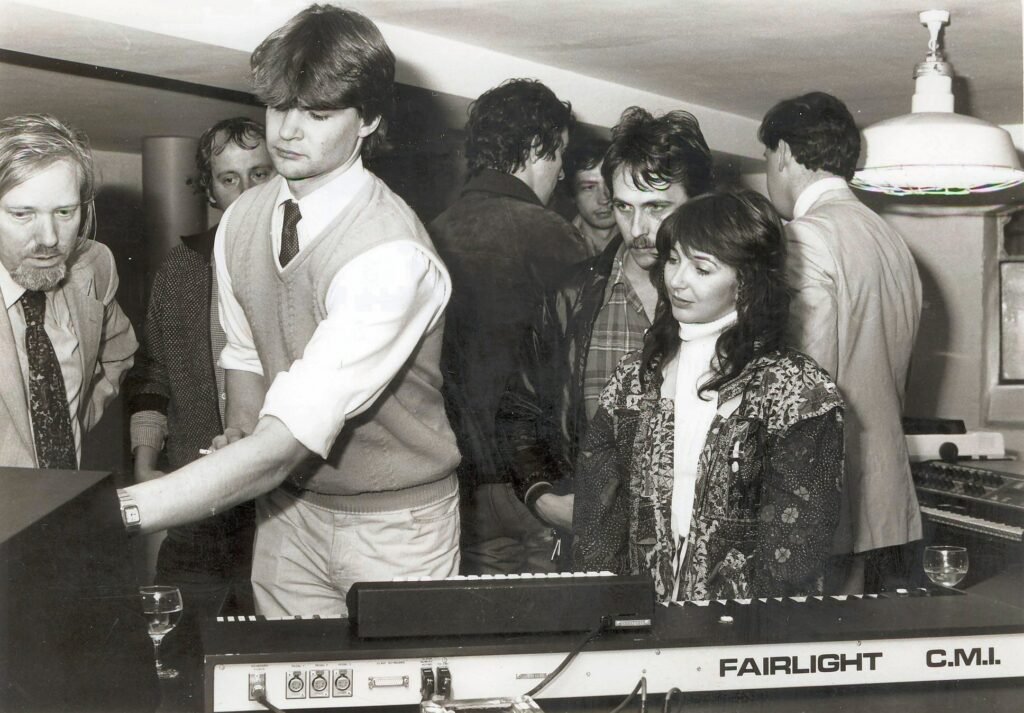
How It Changed Recording Studio Practices
The Fairlight CMI revolutionized recording studio practices by introducing a level of flexibility and creativity that had previously been unattainable. Before its advent, recording studios relied heavily on analog equipment, which was often cumbersome and limited in its capabilities. The digital sampling and sequencing features of the Fairlight CMI allowed producers to streamline their workflow and explore new sonic territories without the constraints of analog technology.
One of the most significant changes was the ability to sample and manipulate real-world sounds directly within the studio. This eliminated the need for complex and time-consuming tape manipulation techniques, such as splicing and looping, which were previously used to achieve similar effects. The Fairlight CMI’s graphical interface also made it easier for producers to visualize and edit their compositions, leading to more efficient and precise sound design.
Additionally, the Fairlight CMI’s integration of sequencing and sampling into a single instrument meant that entire compositions could be created and refined within the machine. This reduced the need for multiple pieces of equipment and simplified the production process. As a result, studios could achieve higher productivity and greater creative output, transforming how music was recorded and produced.
Adoption by Prominent Artists and Producers
The Fairlight CMI quickly gained a reputation as a groundbreaking tool, and its adoption by prominent artists and producers played a crucial role in its widespread influence. Musicians like Peter Gabriel, Kate Bush, and Stevie Wonder were among the first to recognize its potential and integrate it into their work, pushing the boundaries of what was possible in music production.
Peter Gabriel’s use of the Fairlight CMI on his landmark album “Peter Gabriel (IV),” also known as “Security,” demonstrated the instrument’s capabilities in creating innovative sounds and textures. Kate Bush’s “Hounds of Love” is another iconic example, with the Fairlight CMI’s sampling and sequencing features central to its lush and experimental production. Stevie Wonder utilized the Fairlight to enhance his already pioneering approach to music, adding new dimensions to his sound.
Producers such as Trevor Horn and Thomas Dolby also embraced the Fairlight CMI, using it to craft hit records that defined the sound of the 1980s. Horn’s work with the Art of Noise and Frankie Goes to Hollywood showcased the Fairlight’s ability to create intricate, sample-based compositions, while Dolby’s solo work highlighted its potential for innovative sound design.
Influence on Music Genres (Pop, Rock, Electronic, etc.)
The Fairlight CMI’s influence extended across a wide range of music genres, fundamentally altering the sound and production techniques of each.
Pop Music: In pop music, the Fairlight CMI became a staple for its ability to produce polished, radio-friendly tracks with intricate layers of sampled sounds. Artists like Madonna and Duran Duran used it to create catchy, innovative pop songs that dominated the charts in the 1980s.
Rock Music: In rock, the Fairlight CMI allowed bands to experiment with new sounds and textures, blending traditional rock elements with digital samples. Bands like Genesis and Yes incorporated the Fairlight into their music, resulting in more complex and sonically rich recordings.
Electronic Music: The impact of the Fairlight CMI on electronic music was perhaps the most profound. It provided the tools for electronic artists to sample, sequence, and manipulate sounds in ways that were previously impossible. Pioneers of electronic music, such as Jean-Michel Jarre and Depeche Mode, leveraged the Fairlight to push the boundaries of the genre, creating futuristic and immersive soundscapes.
Hip-Hop: Although not as widely associated with the Fairlight CMI as other genres, its influence on hip-hop should not be overlooked. Early hip-hop producers used its sampling capabilities to create beats and loops, laying the groundwork for the genre’s signature sound.
Cultural and Industry Influence
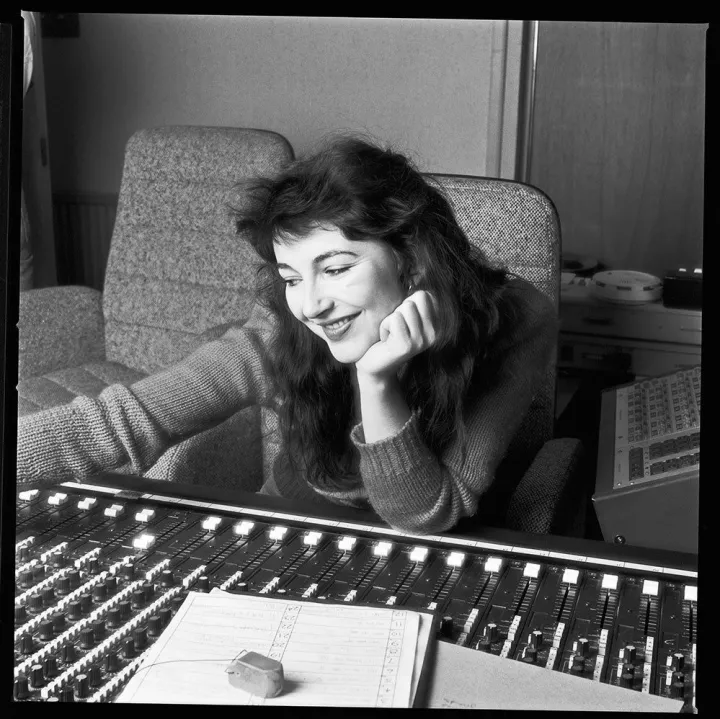
Shifts in Music Industry Practices
The introduction of the Fairlight CMI brought about significant shifts in music industry practices, fundamentally altering how music was created, recorded, and produced. Before the Fairlight, music production was largely dependent on analog equipment, which limited the precision and flexibility available to artists and producers. The Fairlight CMI, with its groundbreaking digital sampling and sequencing capabilities, revolutionized this process.
One of the most notable shifts was the democratization of sound design. The Fairlight CMI allowed musicians to sample any sound and manipulate it digitally, giving them unprecedented control over their sonic creations. This reduced reliance on traditional instruments and recording techniques, empowering artists to experiment with new sounds and textures. The ability to edit and arrange music visually through the Fairlight’s graphical interface also streamlined the production process, making it more efficient and accessible.
Moreover, the Fairlight CMI facilitated a shift towards more sophisticated and complex music production. Its advanced capabilities enabled producers to layer multiple sounds, create intricate sequences, and achieve higher levels of precision in their recordings. This led to the emergence of highly produced and polished music that defined much of the 1980s and beyond. The influence of the Fairlight CMI can be seen in the rise of new genres, such as synth-pop and electronic music, which heavily relied on digital sampling and sequencing.
Broader Cultural Impact Beyond Music
The Fairlight CMI’s influence extended beyond the music industry, impacting film, television, and advertising. Its ability to create unique and dynamic soundscapes made it a valuable tool for sound designers and composers working in various media.
In film, the Fairlight CMI was used to produce innovative soundtracks that enhanced the cinematic experience. Its digital sampling capabilities allowed composers to incorporate a wide range of sounds and effects, creating immersive audio environments that complemented the visuals. Notable examples include the use of the Fairlight in film scores by composers such as Hans Zimmer, who leveraged its capabilities to craft iconic soundtracks.
Television also benefited from the Fairlight CMI’s versatility. It was used to create memorable theme songs and sound effects that became integral to the identity of many TV shows. The ability to produce high-quality audio quickly and efficiently made it an essential tool for television production.
In advertising, the Fairlight CMI enabled the creation of distinctive jingles and audio branding. Its digital sampling and sequencing features allowed advertisers to craft catchy and memorable tunes that resonated with audiences. This capability helped elevate the role of music in advertising, making it a key component of successful marketing campaigns.
Comparison with Contemporary Instruments and Technologies
When compared with contemporary instruments and technologies, the Fairlight CMI stands out for its pioneering innovations and lasting impact. During its time, the Fairlight was a trailblazer, offering capabilities that were unmatched by other instruments. Analog synthesizers, like the Moog and ARP, were limited to generating sounds through oscillators and lacked the ability to sample and manipulate real-world sounds. The Fairlight CMI’s digital sampling opened up new creative possibilities that analog technology could not achieve.
In terms of sequencing, the Fairlight CMI’s Page R sequencer was far ahead of its time. While analog sequencers existed, they were often cumbersome and less intuitive. The graphical interface of the Fairlight made sequencing more accessible and visually oriented, paving the way for future digital audio workstations (DAWs) and software-based sequencing tools that dominate today’s music production landscape.
Modern DAWs, such as Ableton Live, Logic Pro, and Pro Tools, owe a great deal to the innovations introduced by the Fairlight CMI. These platforms build on the foundation of digital sampling, sequencing, and sound manipulation that the Fairlight pioneered. However, contemporary tools offer significantly more processing power, memory, and flexibility, reflecting the advancements in computer technology since the Fairlight’s inception.
Despite these advancements, the Fairlight CMI’s legacy remains significant. It was a catalyst for the digital revolution in music production, influencing not only the tools and techniques used by musicians and producers but also the broader cultural landscape. Its impact can still be felt today, as the principles of digital sampling and sequencing continue to shape the way music and sound are created and experienced.
